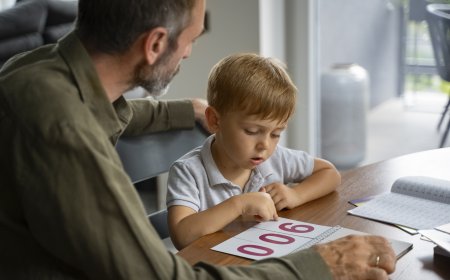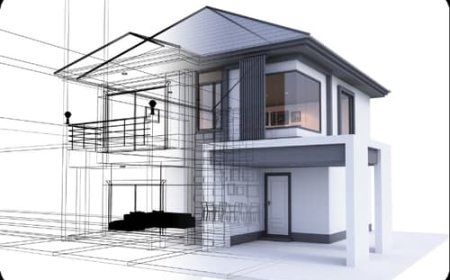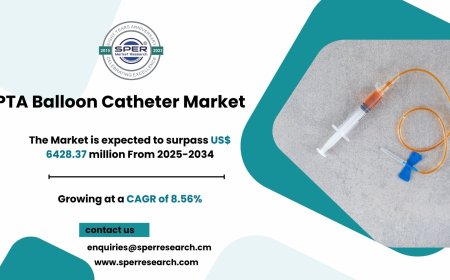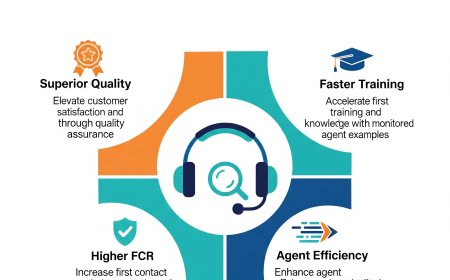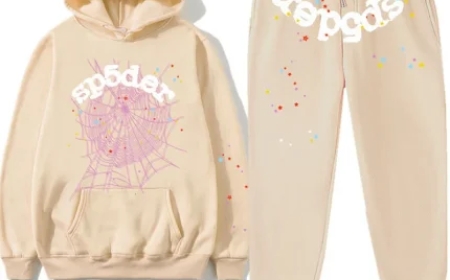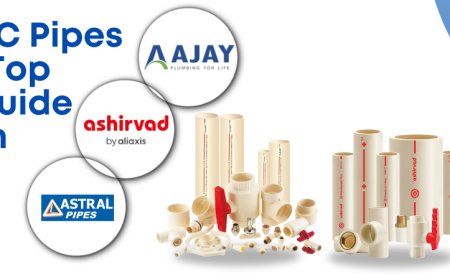How To Vintage Clothing Montana El Paso
How to Vintage Clothing Montana El Paso Vintage clothing is more than a fashion statement—it’s a cultural artifact, a sustainable choice, and a deeply personal expression of style. When you combine the rugged, open-air spirit of Montana with the rich, borderland heritage of El Paso, you unlock a unique niche in the vintage apparel world. “How to Vintage Clothing Montana El Paso” isn’t just a searc
How to Vintage Clothing Montana El Paso
Vintage clothing is more than a fashion statement—it’s a cultural artifact, a sustainable choice, and a deeply personal expression of style. When you combine the rugged, open-air spirit of Montana with the rich, borderland heritage of El Paso, you unlock a unique niche in the vintage apparel world. “How to Vintage Clothing Montana El Paso” isn’t just a search phrase—it’s a journey into sourcing, curating, and styling garments that reflect the soul of two distinct American regions. Whether you’re a collector, a reseller, a stylist, or simply someone drawn to the authenticity of bygone eras, understanding how to navigate this specific vintage landscape requires more than luck. It demands knowledge, patience, and cultural awareness.
This guide is your comprehensive roadmap to mastering vintage clothing in the context of Montana and El Paso. We’ll explore how to identify authentic pieces, where to find them, how to evaluate their condition and value, and how to style them in ways that honor their origins. You’ll learn practical techniques used by seasoned dealers, ethical sourcing principles, and the hidden stories behind denim from 1950s Montana ranches and embroidered serapes from mid-century El Paso. This isn’t about generic vintage shopping—it’s about connecting with the geography, history, and craftsmanship embedded in each garment.
As sustainability becomes a non-negotiable value in fashion, vintage clothing from these regions offers more than aesthetic appeal—it represents a circular economy rooted in durability and heritage. Montana’s rugged outdoor culture produced workwear built to last: Carhartt overalls, Pendleton wool shirts, and leather boots worn by cowboys and loggers. El Paso, as a crossroads of Mexican and American influences, gave rise to intricate hand-stitched textiles, military surplus gear, and mid-century casualwear that blended functionality with cultural pride. Understanding the convergence of these two worlds allows you to curate collections that are not only valuable but meaningful.
In this guide, you’ll discover how to distinguish genuine vintage from modern reproductions, how to build relationships with local sellers in both regions, and how to present your finds with authenticity. We’ll break down the process into actionable steps, share expert best practices, recommend essential tools, showcase real-world examples, and answer the most common questions. By the end, you won’t just know how to vintage clothing Montana El Paso—you’ll understand why it matters.
Step-by-Step Guide
Step 1: Understand the Regional Significance of Vintage in Montana and El Paso
Before you begin searching for garments, you must understand the historical context that shaped vintage clothing in both locations. Montana, known for its wide-open spaces, mining towns, and cattle ranches, produced durable, utilitarian clothing from the late 1800s through the 1980s. Key brands include Pendleton Woolen Mills (founded in 1863), Carhartt (established in 1889), and Red Wing Shoes (popular among laborers). These items were designed for harsh weather and hard work, making them exceptionally well-made and long-lasting.
El Paso, situated on the U.S.-Mexico border, has a rich textile tradition shaped by Mexican-American culture. Vintage pieces here often feature hand-embroidered cotton blouses (blusas), serapes from Oaxaca or Sonora, leather jackets with tooled designs, and military surplus issued to soldiers stationed at Fort Bliss. The 1940s–1970s saw a boom in locally made denim, often dyed with indigo and stitched with double-needle seams for durability. You’ll also find vintage Mexican-American dancewear, such as charro suits and embroidered boleros, which are highly collectible.
Recognizing these regional signatures helps you identify authentic pieces and avoid modern imitations. A genuine 1960s Pendleton shirt will have a woven label with the company’s original font and a specific thread count. A true 1950s El Paso serape will have hand-knotted fringes and natural dyes, not synthetic fibers. Study the history. Visit local museums like the Montana Historical Society or the El Paso Museum of History to see archival garments. This foundational knowledge is your first line of defense against counterfeit or mislabeled items.
Step 2: Identify Where to Source Vintage Clothing in Montana and El Paso
Physical locations remain the most reliable sources for authentic vintage in both regions. In Montana, focus on towns with historical significance: Missoula, Bozeman, Helena, and Butte. These cities host well-established thrift stores, estate sale networks, and seasonal flea markets where vintage clothing surfaces regularly. Look for shops like “The Red Door Thrift” in Missoula, “The Montana Mercantile” in Bozeman, and “Butte Antiques & Collectibles” in Butte. Many of these stores have been in business for decades and have curated inventories of Montana-made workwear.
In El Paso, prioritize neighborhoods with deep cultural roots: the Historic Fifth Street, the Sunland Park area, and the downtown border district. Stores like “La Casa de los Antiguos,” “Vintage Border Threads,” and “Mercado del Sol” specialize in Mexican-American vintage textiles. These vendors often have direct connections to families who inherited clothing from grandparents or uncles who worked in the maquiladoras or served in the military. Don’t overlook estate sales—many older residents in El Paso have kept family garments in trunks for generations.
Additionally, attend local events. Montana hosts the “Big Sky Vintage Fair” each summer in Missoula, while El Paso holds the “Borderlands Heritage Market” quarterly. These gatherings attract collectors, historians, and private sellers who bring rare items not found in retail spaces. Bring a checklist: specific sizes, fabric types, and brand labels you’re targeting. Networking with vendors at these events builds long-term access to inventory.
Step 3: Learn How to Authenticate Vintage Garments
Authenticating vintage clothing requires attention to detail. Start with the label. Vintage labels from the 1940s–1970s often have distinct typography, stitching patterns, and material compositions. For example, Pendleton labels from the 1950s used a serif font and included the phrase “Made in USA” in full, while later versions abbreviated it. Carhartt work shirts from the 1960s had a square patch with a red “C” and no logo on the sleeve—modern reproductions often add branding that didn’t exist then.
Examine the construction. Vintage garments were made with precision. Look for double-stitched seams, hand-finished hems, and metal zippers (plastic zippers weren’t common until the 1980s). In El Paso textiles, hand embroidery will have slight irregularities—no two stitches are perfectly aligned. Machine-made reproductions are too uniform. Use a magnifying glass to inspect thread tension and dye consistency. Natural dyes fade unevenly; synthetic dyes remain uniform.
Check for wear patterns consistent with age. A genuine 1950s denim jacket will have fading around the collar, elbows, and pockets from years of use. Look for original buttons—mother-of-pearl, brass, or bakelite—instead of plastic. In Montana pieces, look for patches from logging camps, mining companies, or rodeo events. These are often sewn on with heavy thread and may have faded ink or embroidered names.
Use online databases like the Vintage Fashion Guild or the Library of Congress’s textile archives to compare labels and styles. Take photos of labels and compare them side-by-side. If a piece claims to be from 1947 but has a care tag with synthetic fiber instructions, it’s a reproduction. Authenticity is non-negotiable for value and historical integrity.
Step 4: Evaluate Condition and Value
Condition is paramount. A garment doesn’t need to be pristine to be valuable—it needs to be honest. Minor fading, light pilling, or a few small repairs (if done tastefully with matching thread) can enhance authenticity. Major damage like large holes, severe stains, or missing buttons significantly reduces value unless the piece is exceptionally rare.
For Montana workwear, consider the original purpose. A 1960s Carhartt bib overalls with reinforced knees and a functional tool pocket holds more value than one with frayed seams and no pockets. Pendleton wool shirts with intact buttons and no moth holes are prized, especially if they retain their original color (deep reds, greens, and blacks from natural dyes are rarer).
In El Paso textiles, embroidery condition matters most. A serape with faded but complete patterns is more valuable than one with missing sections. Blusas with intact hand-stitched collars and original lace trim are highly sought after. Military surplus from Fort Bliss, such as 1950s wool field jackets, should retain their original insignia and interior lining.
Research recent sales on platforms like Etsy, eBay, and specialized vintage auctions. Filter by location and date to see what similar items sold for in the last six months. Don’t rely on asking prices—look at actual sold listings. A 1972 Pendleton shirt in excellent condition might sell for $120–$180. A 1955 El Paso embroidered blouse with original tags can fetch $200–$350. Price based on rarity, condition, and provenance—not just aesthetics.
Step 5: Clean and Preserve Without Damaging
Vintage garments are fragile. Never machine wash or dry clean unless you’re certain of the fabric. Wool, silk, and cotton from the 1940s–1960s often degrade under modern detergents. Instead, hand wash in cold water using pH-neutral soap like Orvus WA Paste. Soak for 15 minutes, gently agitate, and rinse twice. Never wring—roll in a towel to absorb moisture.
For delicate embroidery (common in El Paso blusas), lay flat on a towel and spot-clean stains with a cotton swab dipped in distilled water. Avoid bleach, vinegar, or baking soda—they can dissolve dyes. Air dry away from direct sunlight, which fades colors and weakens fibers.
Store items properly. Use acid-free tissue paper to stuff sleeves and collars to maintain shape. Hang wool and denim on padded hangers to prevent shoulder distortion. Keep garments in breathable cotton bags—not plastic—which traps moisture. Store in a cool, dry place with consistent temperature. Cedar blocks deter moths; avoid mothballs, which leave chemical residues.
Document your care process. Take before-and-after photos and note any repairs. This adds provenance and increases resale value. Buyers appreciate transparency.
Step 6: Style and Present Your Vintage Finds
Styling vintage clothing from Montana and El Paso requires respect for context. A Pendleton shirt from the 1950s pairs beautifully with high-waisted, raw-denim jeans and leather boots—echoing the rancher aesthetic. Layer with a wool vest or flannel for a Montana winter look. Avoid modern accessories; opt for vintage belts, silver concho buckles, or leather gloves.
El Paso textiles shine when styled with intention. An embroidered blouse can be worn with wide-leg linen pants and espadrilles for a borderland summer look. Pair a serape with a simple white tee and denim shorts to let the pattern speak. Avoid overdressing these pieces—they’re meant to be lived in, not displayed behind glass.
Photograph your items in natural light against a backdrop that reflects their origin: a rustic wooden barn for Montana pieces, a textured adobe wall for El Paso textiles. Include close-ups of labels, embroidery, and wear patterns. Write detailed descriptions that mention era, region, brand, and any known history. This storytelling elevates your collection from merchandise to heritage.
Step 7: Build a Network and Sell Strategically
Connect with local collectors, historians, and vintage resellers in both regions. Join Facebook groups like “Montana Vintage Collectors” or “El Paso Border Textiles.” Attend local history society meetings. These networks often share leads on estate sales or private collections before they hit the open market.
When selling, choose platforms wisely. Etsy is ideal for detailed listings with high-resolution photos. Instagram works well for visual storytelling—post reels showing garments being worn in authentic settings. Consider pop-up markets in Missoula or El Paso where buyers value local provenance. Avoid mass-market platforms like Amazon or Depop unless you’re selling reproductions—your authenticity will be lost.
Always provide a certificate of authenticity if possible. Even a handwritten note detailing where and when you acquired the piece adds value. Buyers are willing to pay more for stories.
Best Practices
Respect the cultural origins of every garment. Vintage clothing from El Paso is not “Mexican costume”—it’s everyday wear from generations of Mexican-American families. Avoid exoticizing or commodifying cultural identity. Similarly, Montana workwear represents the labor of real people—miners, ranchers, railroad workers. Honor that legacy.
Always inspect before buying. Bring a small flashlight, magnifying glass, and notebook to record details. Don’t rush purchases—wait for the right piece. The best finds are often discovered after months of searching.
Keep records. Document every acquisition: date, location, price, condition, and provenance. This builds your expertise and protects your investment.
Don’t overclean. Preservation is more valuable than perfection. A few stains or faded patches tell a story—don’t erase them.
Support local businesses. Buying from small, independent sellers in Montana and El Paso keeps the vintage ecosystem alive. Chain thrift stores often sell to large resellers who strip value from local history.
Stay informed. Subscribe to newsletters from the Costume Society of America or the Western Historical Association. Read books like “The American Workwear Tradition” by Susan Strawn and “Border Textiles: A Cultural History” by Maria Elena Martinez.
Tools and Resources
Essential tools for vintage clothing hunting include: a digital scale (to weigh wool for accurate fiber content), a UV light (to detect modern dye residues), a thread counter (to analyze fabric density), and a pH testing strip (to check for acidity in old fabrics).
Online databases: Vintage Fashion Guild (vintagefashionguild.org), The Museum of Applied Arts & Sciences (Australia) textile archive, and the Smithsonian’s National Museum of American History online collection.
Books: “Vintage Clothing: A Guide to Buying and Selling” by Janice H. Smith, “Western Wear: The History of American Ranch Clothing” by James M. Dabbs, and “La Ropa de la Frontera: Textiles of the U.S.-Mexico Border” by Luisa M. Cortez.
Apps: Google Lens (for label identification), eBay Sold Listings (for pricing), and Instagram’s hashtag search (
montanavintage, #elpasovintage, #borderlandtextiles).
Local resources: Montana Historical Society’s textile archive, El Paso Public Library’s Border History Room, and the University of Texas at El Paso’s Chicano Studies Center.
Real Examples
Example 1: 1958 Pendleton Wool Shirt – Missoula, Montana
A collector purchased a size 38 Pendleton wool shirt from a 1958 estate sale in Missoula. The shirt had a faded red plaid pattern, original brass buttons, and a woven label with the phrase “Pendleton Woolen Mills, Portland, Oregon” in a serif font. There was minor fading at the collar and a small repair on the left cuff, sewn with matching thread. The seller included a handwritten note: “Worn by my grandfather on the Bitterroot Ranch, 1958–1963.” The shirt sold on Etsy for $165 after three days, with the buyer citing the provenance as the deciding factor.
Example 2: 1963 Embroidered Blusa – El Paso, Texas
A local historian found a hand-embroidered cotton blouse at a Sunday market in the Historic Fifth Street district. The blouse featured floral motifs in silk thread, a high collar with lace trim, and a tag reading “Made in El Paso, TX” in faded ink. The embroidery was slightly uneven—indicating handwork—and the fabric showed natural yellowing consistent with age. The seller, a 78-year-old woman, said her mother wore it to quinceañeras in the 1960s. The blouse was listed on Instagram with photos of the embroidery under natural light and sold for $280 to a textile museum in San Antonio.
Example 3: 1971 Carhartt Bib Overalls – Butte, Montana
At a Butte flea market, a vendor discovered a pair of Carhartt bib overalls with the original red “C” patch on the chest, reinforced knees, and a functional tool pocket. The denim was faded to a soft blue-gray, with wear patterns consistent with decades of use. The label read “Carhartt, Detroit, Mich.” with no plastic zipper. The overalls were cleaned gently and displayed at a Montana heritage fair. A collector from Portland bought them for $210, planning to use them in a documentary on American labor wear.
Example 4: 1955 Serape – Sunland Park, El Paso
A serape purchased from a family in Sunland Park featured hand-knotted fringes, a geometric pattern in indigo and crimson, and a small woven tag that read “Hecho en México.” The wool was thick, and the dyes showed natural variation. The seller had no idea of its age—only that it had been passed down for four generations. After consulting with a textile conservator at UTEP, it was dated to 1955. It was later acquired by the National Museum of Mexican Art in Chicago for $420, cited as a “rare example of borderland textile craftsmanship.”
FAQs
Can I find authentic Montana vintage clothing in El Paso?
Yes, but rarely. Montana workwear is less common in El Paso due to regional differences in climate and culture. However, military surplus stores or estate sales may occasionally have items brought back by veterans or travelers. Always authenticate carefully—many modern “Western-style” garments are mass-produced and falsely labeled.
How do I know if a serape is truly vintage?
Check for hand-knotted fringes, natural dyes (which fade unevenly), wool or cotton blends (not polyester), and irregular embroidery patterns. Machine-made serapes from the 1990s onward have uniform stitching and synthetic fibers. Look for wear consistent with decades of use—not new-looking fabric.
Is it worth restoring damaged vintage clothing?
Yes—if the piece is rare or culturally significant. Minor repairs with matching thread and materials preserve value. Major damage (large tears, mold, chemical stains) may reduce value unless the item is historically unique. Always consult a textile conservator before attempting restoration.
What’s the most valuable type of vintage clothing from Montana?
Pendleton wool shirts from the 1940s–1960s, especially in rare colors like forest green or deep burgundy, are among the most valuable. Carhartt workwear with original labels and functional features (tool pockets, reinforced knees) also commands high prices.
How do I avoid buying fake vintage?
Look for inconsistencies: modern zippers, plastic buttons, synthetic fibers, or labels with contemporary fonts. Cross-reference with archival images. Ask sellers for provenance. If the price seems too good to be true, it probably is.
Can I sell vintage clothing from Montana and El Paso online?
Absolutely. Platforms like Etsy, Instagram, and specialized vintage forums attract buyers who value regional authenticity. High-quality photos, detailed descriptions, and historical context significantly increase sales potential.
Are there legal restrictions on selling vintage clothing from the U.S.-Mexico border?
No. As long as the items are not protected cultural artifacts (e.g., pre-Columbian textiles) or made from endangered materials (e.g., certain furs), there are no restrictions. Always declare items accurately when shipping internationally.
How can I learn more about textile history in these regions?
Visit local museums, attend lectures by university textile departments, and read peer-reviewed journals like “Textile History” or “Western Historical Quarterly.” Join online communities dedicated to regional vintage.
Conclusion
Vintage clothing from Montana and El Paso is not merely apparel—it’s a living archive of American labor, culture, and resilience. Each garment tells a story of weathered hands, dusty roads, family traditions, and quiet pride. To engage with this world is to become a steward of history, not just a buyer or seller. The journey of “How to Vintage Clothing Montana El Paso” is one of patience, research, and deep respect.
You now possess the tools to authenticate, preserve, and present these treasures with integrity. You know where to look, how to evaluate, and how to honor the origins of every thread. Whether you’re drawn to the enduring wool of a Pendleton shirt or the vibrant embroidery of a borderland blouse, your choices matter. You are helping to keep these stories alive in a world that too often discards the past.
As you continue your journey, remember: the most valuable vintage item isn’t the one with the highest price tag—it’s the one that carries the most truth. Wear it. Share it. Protect it. And let the spirit of Montana’s wide skies and El Paso’s borderland heart guide your path.






